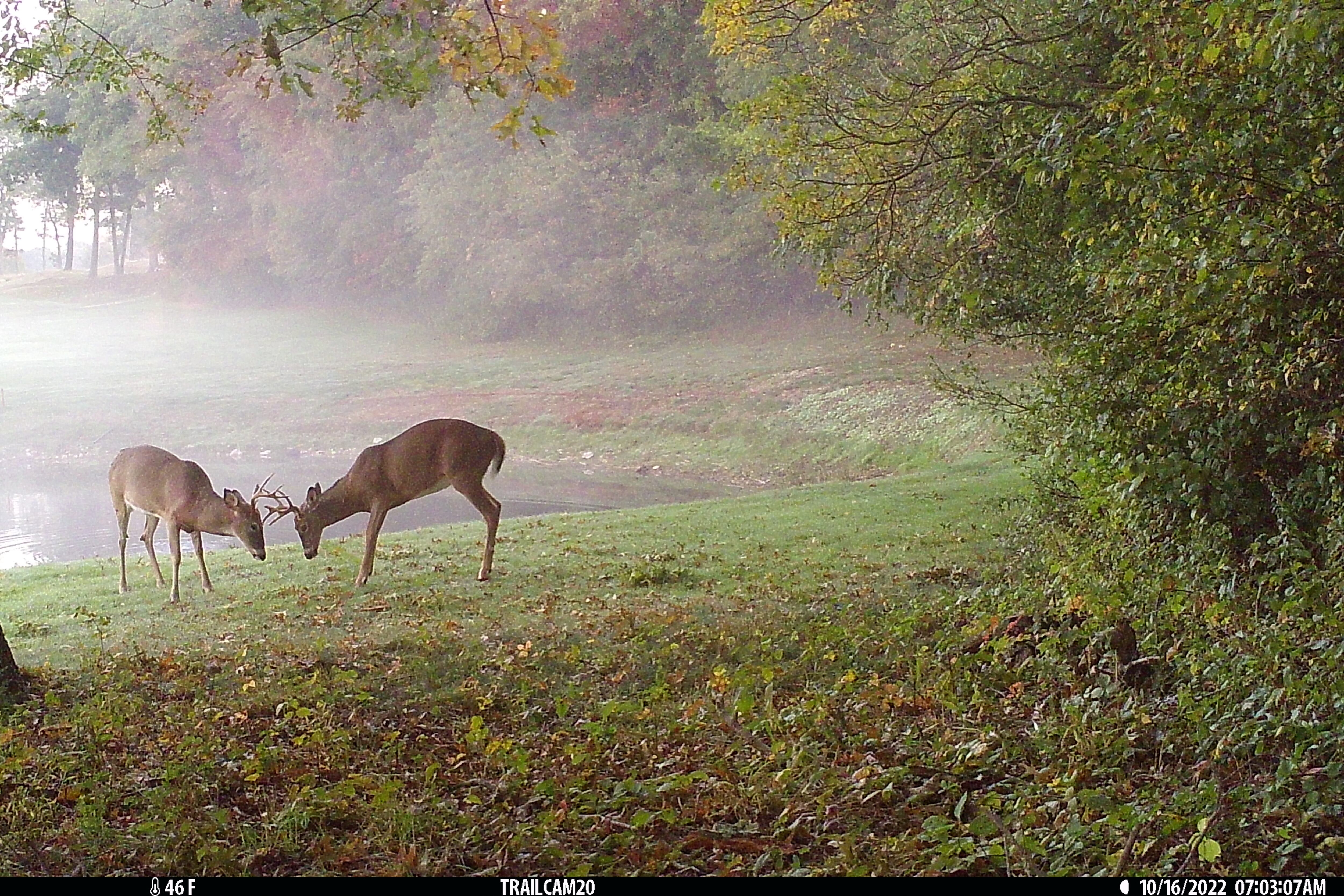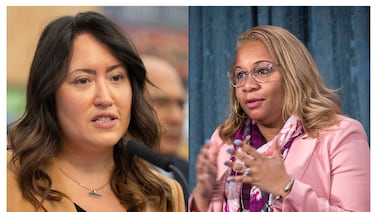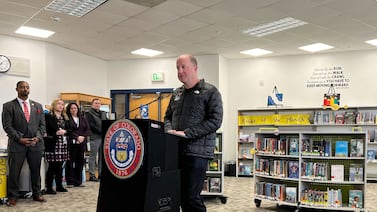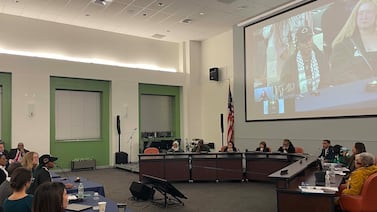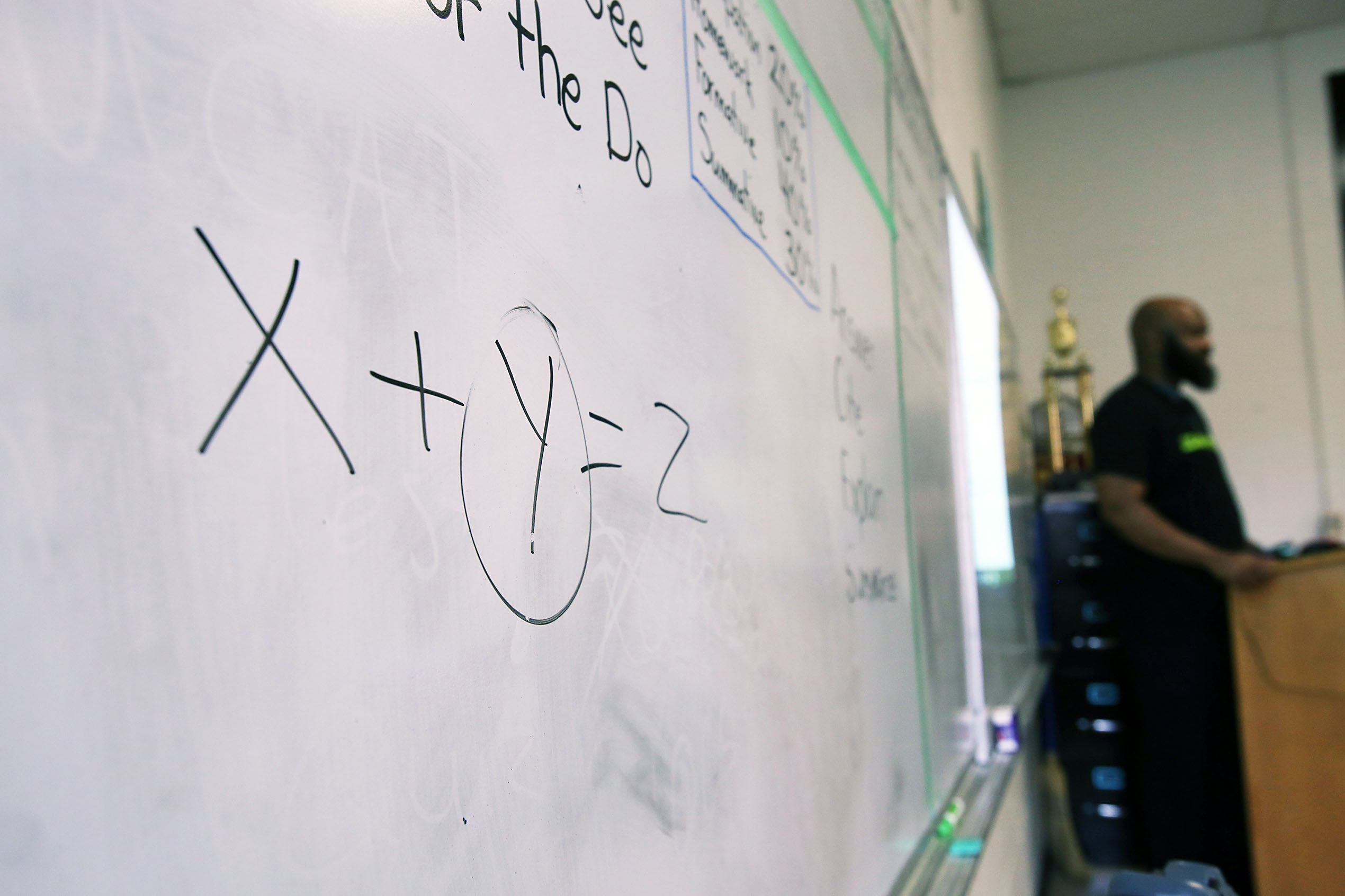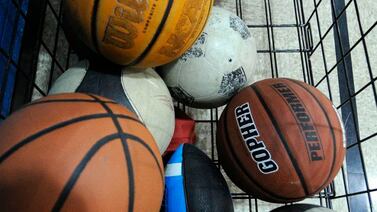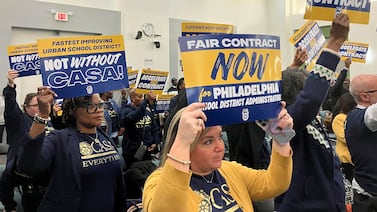Brooklyn seventh grader Mahima Peters-Paleja typically thought of rats and pigeons when picturing her borough’s wildlife. But now she’s got a glimpse of a more diverse ecosystem that surrounds her Coney Island middle school.
With the help of wildlife biologist Myles Davis, seventh grade students at Mark Twain Intermediate School for the Gifted & Talented have worked for months on a project monitoring animal activity in a nearby park through trail cameras.
Students worked with Davis to set up the cameras in December, and have since gathered hundreds of photos of birds, stray cats, and even a skunk. Those photos will be tagged and analyzed by the students, who will present their findings at a student showcase later this month.
“Now I know there’s a lot more wildlife, and I’m more open to seeing it,” Mahima said.
The project is part of the New York Academy of Sciences’ scientist-in-residence program, which has placed hundreds of working scientists in the city’s schools since its founding, with more than two dozen currently in schools helping students develop projects focused on science and math.
Aimee Kemp, a science teacher at Mark Twain, said the project has helped her students engage deeply in their work — with every creature caught on camera bringing a new wave of excitement to the class.
“Part of my goal is to have the students leave with an understanding of what it’s like to really be a scientist,” she said. “The scientist-in-residence program provides the opportunity for me to bring in a real scientist, and get the kids into the hands-on learning portion of fieldwork and experimentation.”
Students have been involved in the project from day one, helping develop and pose the research questions that drive their work, she said.
For some students, like Ryan Basha, it’s been an opportunity to envision what a career in the field could someday look like.
“I’ve had an interest in science since I was little,” he said. “And actually working with a scientist, I feel like it’s been elevated even more — because I get to know what it’d actually be like if I do become a scientist.”
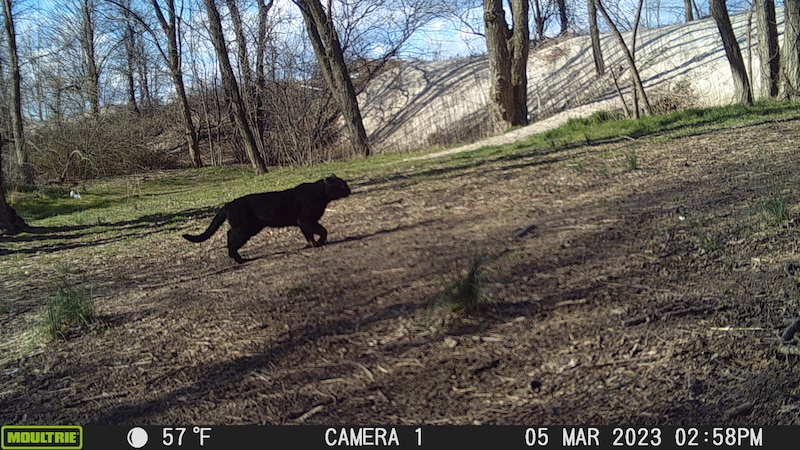
For Davis, a native of Brooklyn who recently graduated from a master’s program in ecology and evolutionary biology at Columbia University, the partnership has been an opportunity “to share the information I wanted as a kid with other kids growing up in Brooklyn.”
“I was their age before and I was naturally curious about wildlife, that’s why I’m in the field I’m in now — but the only way I was able to get that exposure was through TV or going to the zoo,” he said. “The beauty of this project is that you realize these spaces that you grow up around have this insane wildlife diversity that you really can’t tell, because these animals come out at night. Unless you’re standing completely still in the park at 4 a.m., you won’t see them.”
He said the students’ project is a scaled-down version of his research across New York City, where he studies how factors like housing density and human activity affect mammals in the city’s green spaces.
Across parks in Brooklyn and Queens, Davis’ cameras have documented everything from skunks and raccoons to deer, foxes, and even coyotes. The students from Twain, however, did not see any rabbits, which were formerly plentiful in Coney Island and believed to have inspired the neighborhood’s name, from the Dutch word “konjin” for rabbit.
He hopes the students will leave the project with a new appreciation for green spaces, and with the knowledge that the city is home to a diverse ecosystem.
“I don’t expect all of them to become wildlife biologists,” he said. “But the lessons that they learn through applying these scientific techniques — like graph making or data management — they apply to any scientific field, or really any field where you’re using a computer.”
Students also noted they’ve developed a close bond with Davis.
“It’s been really cool,” said student Luke Braun. “We get the experience of what it’s actually like to be a scientist.”
Julian Shen-Berro is a reporter covering New York City. Contact him at jshen-berro@chalkbeat.org.

